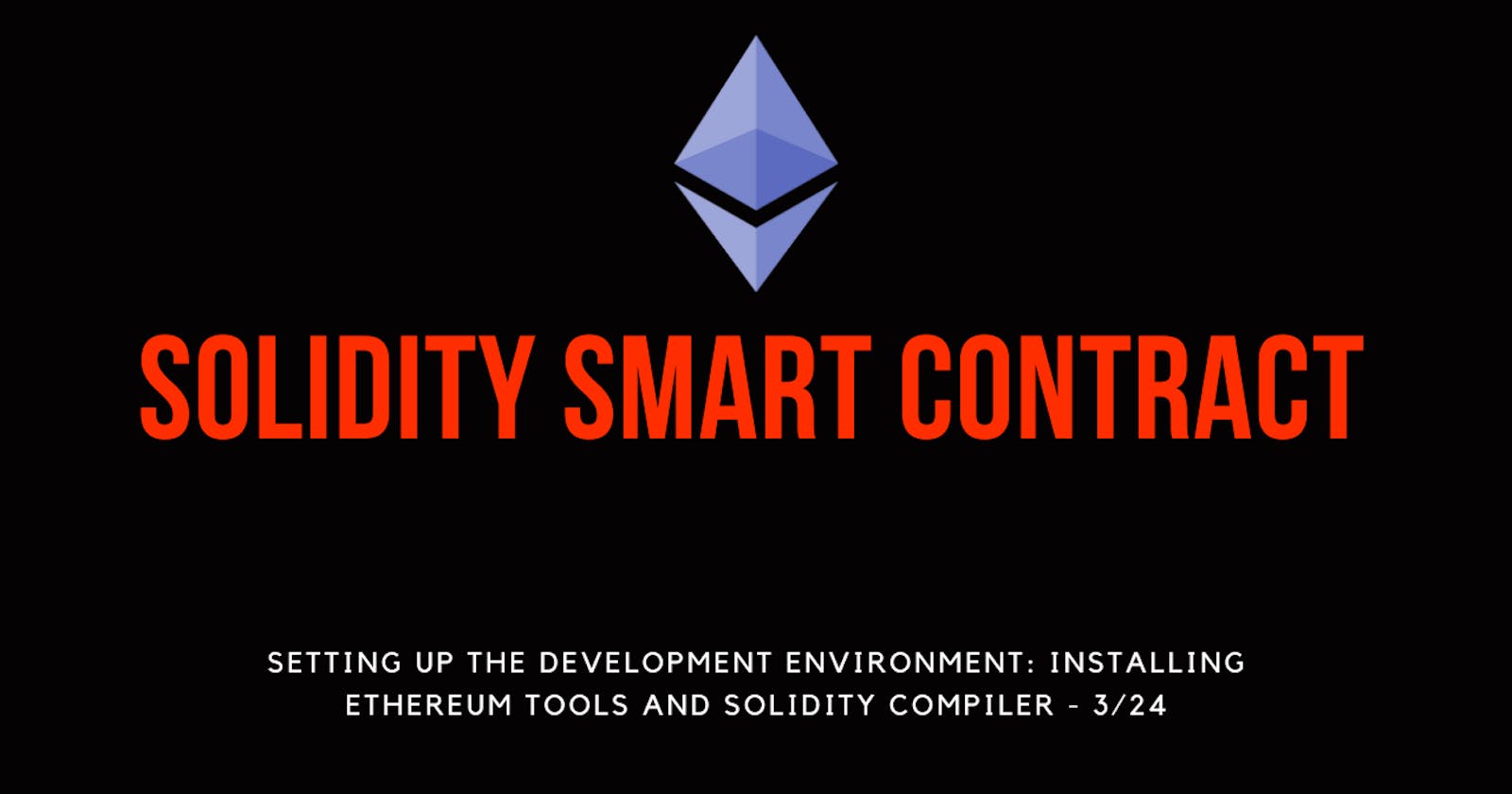Setting Up the Development Environment: Installing Ethereum Tools and Solidity Compiler
3 / 24 article tutorial series on Solidity development
Welcome to the third article in our comprehensive 24-article tutorial series on Solidity development! In this series, we are guiding you through the process of becoming a proficient Solidity developer, covering everything from the basics of smart contracts to more advanced topics like security, auditing, and much more. If you haven't subscribed yet, make sure to do so to receive updates and notifications as we release each new article.
Why a Proper Development Environment Matters?
Before diving into Solidity development, it is essential to set up a proper development environment. A well-configured environment ensures smooth and efficient coding, testing, and deployment of smart contracts. In this article, we will walk you through the steps to install the necessary Ethereum tools and the Solidity compiler, so you can start building smart contracts on the Ethereum platform.
Installing Ethereum Tools:
To begin, you need to install some essential Ethereum tools that will facilitate your development process:
Ganache: Ganache is a local Ethereum blockchain emulator that allows you to test and deploy smart contracts in a sandbox environment. It provides you with a set of accounts, and you can use it to simulate transactions without spending real Ether.
Truffle: Truffle is a popular development framework for Ethereum, making it easier to compile, deploy, and test smart contracts. It comes with built-in tools for contract management, migrations, and testing.
MetaMask: MetaMask is a browser extension wallet that allows you to interact with the Ethereum blockchain from your web browser. It provides a convenient way to manage accounts and sign transactions when working with DApps.
Installing the Solidity Compiler:
Once you have the necessary Ethereum tools installed, the next step is to set up the Solidity compiler. The Solidity compiler, also known as "solc," is responsible for converting your Solidity smart contract code into bytecode that can be executed on the Ethereum Virtual Machine (EVM).
Solidity Development IDE:
While you can use any text editor to write Solidity code, it is highly recommended to use a specialized Integrated Development Environment (IDE) designed for Ethereum development. Remix IDE is an excellent online IDE that allows you to write, compile, and deploy Solidity smart contracts directly from your web browser.
Conclusion:
Setting up a robust development environment is a crucial first step in your journey as a Solidity developer. By installing the necessary Ethereum tools and the Solidity compiler, you create a solid foundation for developing, testing, and deploying smart contracts on the Ethereum blockchain. In the next articles, we will delve deeper into writing your first Solidity smart contract, exploring various features, and creating more complex decentralized applications.

